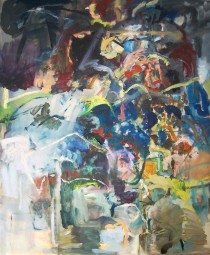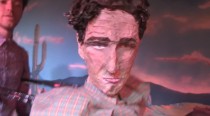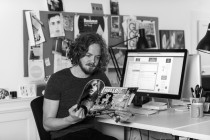In the spirit of Central Station’s ‘Process month’, I thought that I would share an insight into one of my more intriguing works.
A number of years back, The Sunday Times suggested that I was the first person in the world to create a piece of art using e.coli bacteria. Initially, it was a bit strange to be recognised for creating art out of a substance that is best known for its ability to make a human seriously ill, but I quickly got used to it as I realised that the story itself was an fascinating anecdote.
The process started when I was dealt the challenge of designing an interpretation of the MTV logo under the simple brief of the word ‘virus’. Before I continue, it is worth pointing out that in my final year of studies my aim was to experiment as much as humanly possible, and that included artistic mediums that had never been used before.
My idea was to literally grow the symbol using bacteria and record the process occurring with time-lapse equipment. Now, I suspect that some of you are wondering why I would choose to do this, so I will endeavor to explain. As a visual artist I am attracted to the investigation of the positive and the negative. In particular, I find it the greatest challenge to transform a substance that once held negative aesthetic connotations into something that is utterly beautiful.
Once I had fully resolved my concept, I approached various commercial and education bio labs to further research the practicalities of the work. After hours of e-mail correspondence, I was fortunate to get through to a professor by the name of Chris French at the University of Edinburgh, who said that growth into the shape of the famous mark would not be a problem using e.coli bacteria. I have to confess, at that point I was a little worried. The most dangerous strains of e.coli can kill, which puts a whole new spin on suffering for one’s art.
I pulled on a white coat and protective gloves and carried out several experiments by growing the fluorescent, genetically modified e.coli bacteria under controlled conditions. I continued the pursuit until ultimately, I was happy with the result. It was only then that I took the footage and carried out post-production on a Mac.
The Process
Stage 1
The invisible genetically modified e.coli bacteria was ‘drawn’ directly on to the petri dish.
Stage 2
Each experiment was carried out under ‘controlled conditions’ for optimum growth.
Stage 3
The petri dish was placed on top of a light box and the growth was recorded by using time-lapse equipment over a 48 hour period.
Stage 4
The successful result with accidental contamination.














Comments